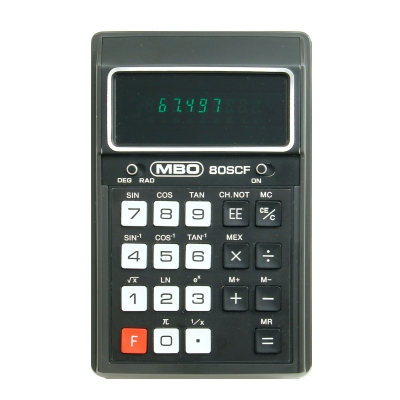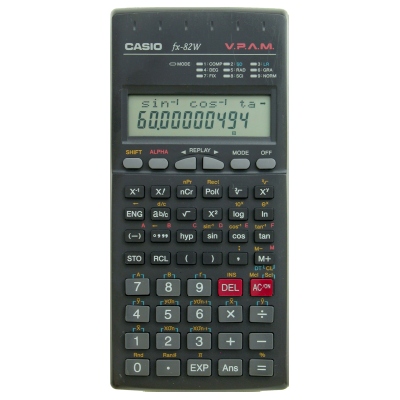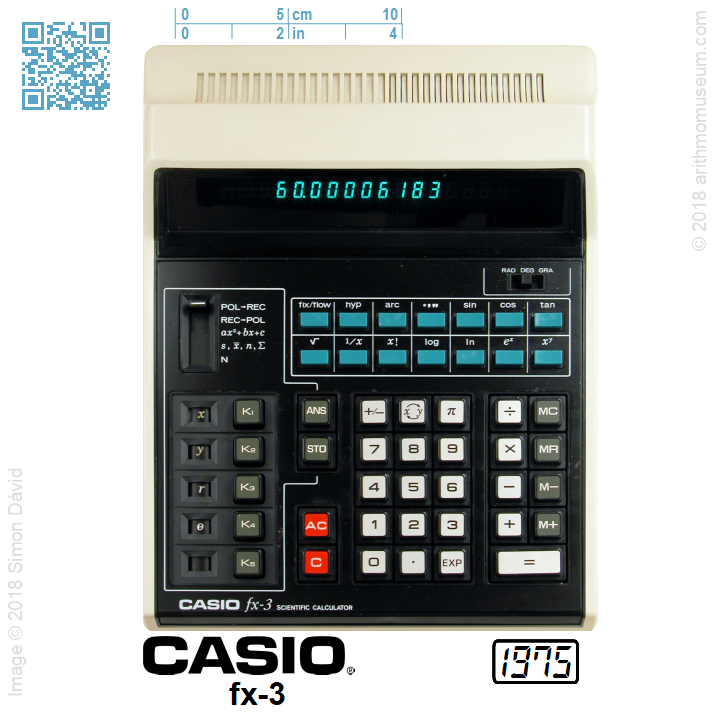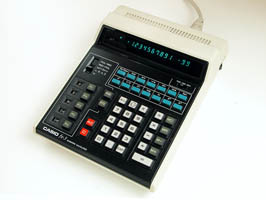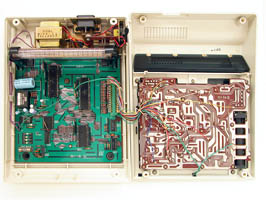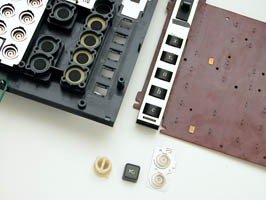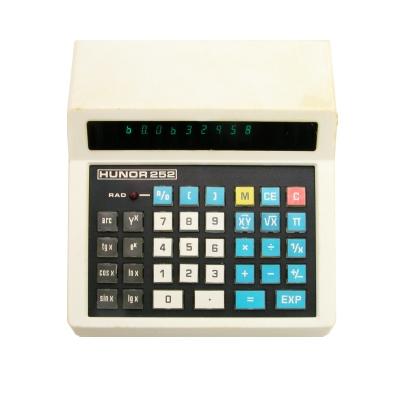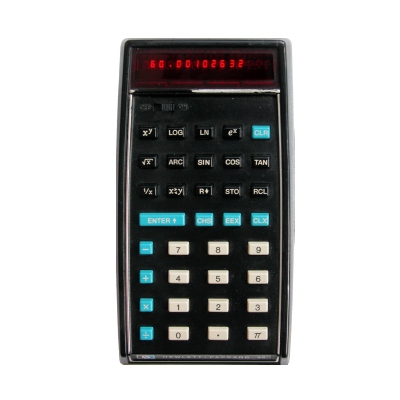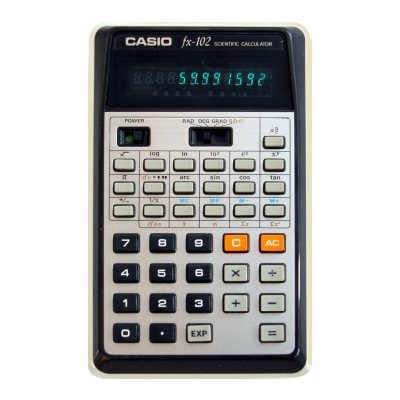Casio fx-3
In 1973, a modified version of the fx-1 introduced. The fx-2 used VFD tubes instead of Nixie-tubes. Its price was reduced to 98,000 yen.
In 1974, a simpified scientific calculator in pocket size was marketed, the fx-10 with retail price of 24,800 yen.
In the next year, a new desktop scientific calculator was released: the fx-3 got above all previous models in its features, capacity and precision. Curiosity of this machine was the program-selection switch on the left, which allows running preprogrammed functions such as coordinate conversions, solving quadratic equations or calculating standard deviation.
Japanese microelectronic industry allowed speeding up developing scientific calculators from 1976, so more and more calculators were released in every year.
| Manufacturer: | CASIO Computer Co., Ltd. (Japan) |
| Mfg. date: | 1975 |
| Size: | 20,5×27,2×7,3 cm |
| Weight (ready for operate): | n.a. |
| Type: | scientific desktop |
| Capacity: | 10/10+2 digits (input/display) 10+2 digits (internal precision) |
| Operating logic: | algebraic |
| CPU: | Hitachi HD36610 + HD3555 + HD35301 |
| Registers: | 2 standard (with saving the pending operation) 1 constant (with saving the pending operation) maximum of 6 memory (with aritmetic) |
| Features: | +/-change sign (direct entry of negative numbers) RVexchange registers (X-Y) Ffloating-point notation Sciscientific (exponential) notation Sqrsquare root pivalue of pi (3.1415..) can be recalled 1/xreciprocal trigtrigonometrical functions (sin, cos, tan and inverses: arcsin, arccos, arctan) hyphyperbolic functions (sinh, cosh, tanh and inverses: ar sinh, ar cosh, ar tanh) DMS-DDconversion of decimal and sexagesimal numbers logexponential and logarithmical functions (10- and e-base) yxraising to power SDone variable statistics: calculating mean and standard deviation P-Rconverting coordinates between rectangular and polar systems n!factorial |
| Display: | 16+1 digit VFD (NEC LD8127) |
| Power: | 110/220V AC |
| Test results: | trigonometry:result of sin-1(cos-1(tan-1(tan(cos(sin(60°)))))), reference value: 60. 60.00006183 exponential:result of 0.999160000, reference value (first 14 digits): 3.0068804206375×10-70 3.006880424E-70 |
Some of its functions can be available directly by pressing the appropriate function key, others can be used with the program-selection switch and the related keys.
The preprogrammed functions use 5 special memory registers (K1..K5), which can store the displayed number by pressing STO K1..K5. To recall contents of these registers, press K1..K5. To run the specific program, press the ANS key.
Using the coordinate-conversion programs: to convert rectangular coordinates to polar (REC→POL), x and y values must be in the K3 and K4 registers (x STO K3, y STO K4). After pressing the ANS key, the result will be calculated and stored in K1 and K2 registers. Polar to rectangular conversion can be used in similar way. Both programs use only the first 4 K registers, so K5 was available to store numbers.
Solving quadratic equation (ax2+bx+c) use all 5 K registers: the three coefficients must be stored in the K3 (a), K4 (b) and K5 (c) registers. After pressing ANS, the two roots are stored in the K1 and K2 registers. If the contents displayed in the K2 register appears with a dot on the left side, the two roots are in complex number format.
In statistics mode (s, x, n, ∑) average and standard deviation can be calculated. To accumulate entered data, press ANS. It causes every time to compute arithmetic mean (K2), standard deviation (K1). In this mode, pressing AC causes clearing all K registers.
In normal mode (N) all K registers can be used as independent memory registers.
